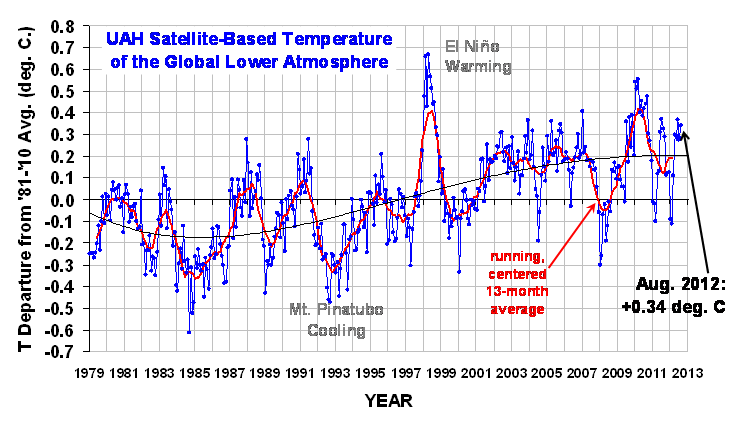The global average lower tropospheric temperature anomaly for August (+0.34 °C) was up from July 2012 (+0.28 °C):

Here are the monthly departures from the 30-year (1981-2010) average:
YR MON GLOBAL NH SH TROPICS
2012 1 -0.09 -0.06 -0.12 -0.13
2012 2 -0.11 -0.01 -0.21 -0.27
2012 3 +0.11 +0.13 +0.10 -0.10
2012 4 +0.30 +0.41 +0.19 -0.12
2012 5 +0.29 +0.44 +0.14 +0.03
2012 6 +0.37 +0.54 +0.20 +0.14
2012 7 +0.28 +0.45 +0.11 +0.33
2012 8 +0.34 +0.38 +0.31 +0.26
As a reminder, the most common reason for large month-to-month swings in global average temperature anomalies (departures from normal) is small fluctuations in the rate of convective overturning of the troposphere, discussed here.

 Home/Blog
Home/Blog



